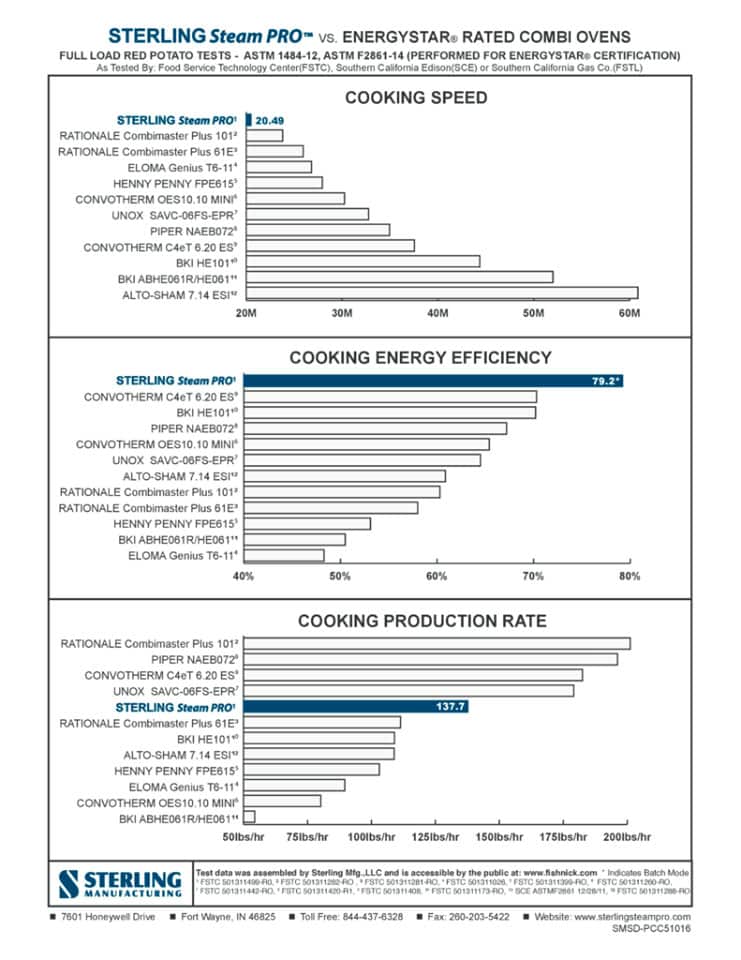Combis Vs. Steamers
Why Buying a Steamer is the Better Bang for your Buck but no of course.
Combination Oven and Steamers also called Combis, are a popular alternative because they don’t require a hot or cold water storage unit. But at what cost?
Combis are versatile and can cook with high humidity. And they do a great job at poaching delicate foods. Combis generally come with three features;
- Convection
- Stream
- Combination Cooking
In the convection mode, the oven circulates dry heat – ideal for pastries and breads. The steam mode injects water into the oven to poach fish, rice and vegetables. When using the combination function, both steam and convection work together to produce results that are moist, flavorful, and have minimal shrinkage.
But if you are buying a combi to add steam production capacity in addition to convection cooking you are much better off buying two convection ovens and a double unit steamer.
Combis are combination oven and steamers but they are not very good steamers. They cost about $20,000 but only cook half as fast as a steamer. For the price of a combi you can buy two convection ovens and double stack steamer. This gives the operator much more cooking capacity and it gives them redundancy if one steamer goes down you still have an oven and one steamer.
To illustrate the key differences of performance between a combi and a convection oven, we’ve prepared an info graphic. Please review the comparison below before you make the decision to buy a combi.
As you can see from the test results below combi’s are low production steamers. For the price of most combi’s you can buy a Sterling Double stack steamer and a large convection oven. This would give you triple the production capacity and redundancy if one steamer goes down you still have a steamer and an oven.
The test data used in the graphs below was provided by independent third party testing laboratories and is a requirement of ENERGY STAR ® to prove efficiencies worthy of certification. The steamers are loaded to capacity with red potatoes and cooked in perforated pans until done. The cook time and energy usage is then recorded. This data is available to the public at www.fishnick.com.

